Traditional Costa Rican Coffee Recipe
This post may contain affiliate links.
Learn how to make the perfect cup of Costa Rican coffee using a traditional “chorreador” and coffee sock. Indulge in the rich flavors of this classic recipe.
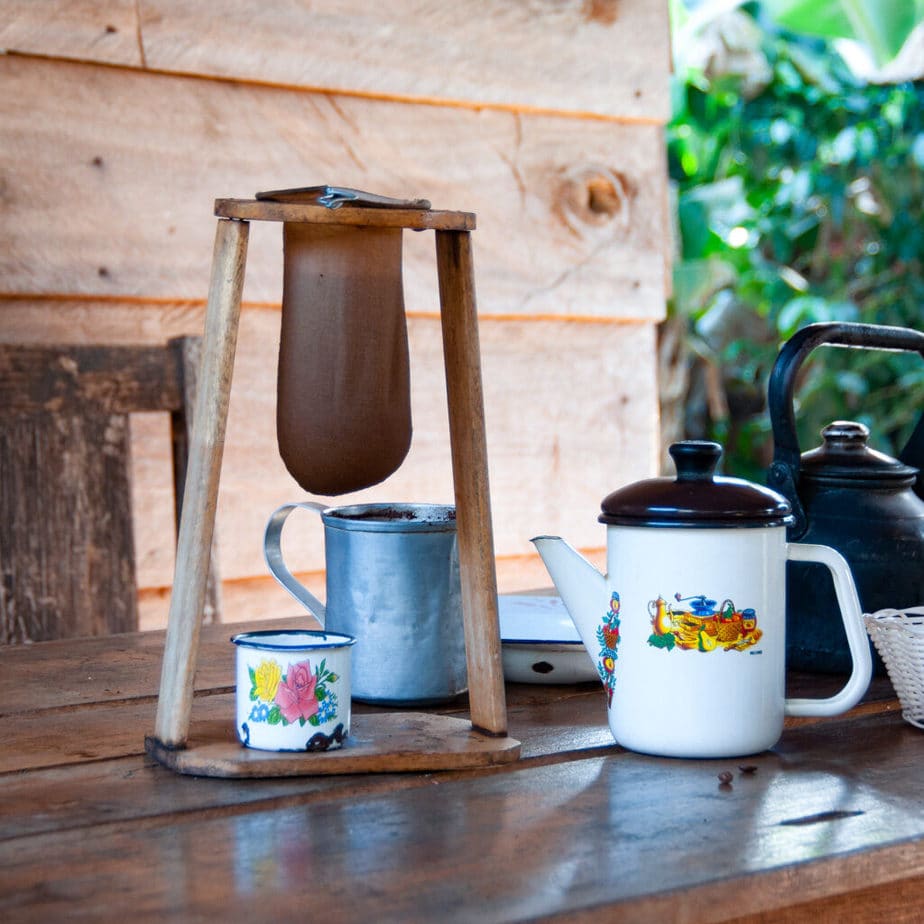
You literally cannot talk about Costa Rica for more than 30 seconds without talking about coffee. Locals often debate the very best Costa Rican coffee to purchase, people talk about the perfect way to make a cup of coffee, and tourists search for the best coffee to take home. One thing is true- Costa Rica is synonymous with coffee.
Besides the actual flavor of the coffee, the real unique aspect of Costa Rican coffee is how it is brewed- it’s a process you won’t see anywhere else in the world.
In this article, I’ll tell you a bit about Costa Rican coffee- when it’s consumed, how it’s made, and a bit about the most popular Costa Rican coffees and where to buy them.
YOU’LL ALSO LOVE: 30+ Foods in Costa Rica
About Costa Rican Coffee Culture
When we talk about Costa Rican coffee, we have to talk first about the ritual surrounding the actual drinking of the coffee. Acquiring, brewing, and consuming coffee are all part of the Costa Rican coffee culture.
Because of this, only very recently have I seen disposable coffee cups in Costa Rica. You will rarely see people sipping coffee when they are out and about doing other things- because coffee is for savoring and for sharing.
When Costa Rican Coffee Is Made
In general, Costa Ricans brew coffee first thing in the morning as part of a hearty Costa Rican breakfast.
Next, at about 10 am most working people are allowed a 15-30 minute coffee break. Most people consume a cup of coffee alongside a snack such as Costa Rican fruit, tamal de masa, tamales, or a small cake such as torta chilena or tres leches.
There’s definitely a joke about government and bank employees that take endless coffee breaks in the morning, but I have been in line for services before where I literally wait 30-45 minutes for someone to drink coffee while I just sit. Morning coffee breaks are not to be messed with.
Some people drink coffee with lunch, but not usually. Lunch is a main meal with the casado and a natural fruit juice.
Next up is afternoon coffee, which again is either a scheduled break in the work day or the very first event that happens when someone gets home from work- usually between 4-6 pm. Usually, afternoon coffee is accompanied by fresh bread from a local bakery or homemade corn tortillas. This means dinner is not really that big of a deal in Costa Rica- if eaten at all.
The afternoon coffee is the most culturally relevant in my opinion because when you ask a tico if they want to get together and hang out, they won’t talk about getting together for a meal like we do often in the States. Instead you will hear “¡vamos a tomar café!”
Someone hosts, and everyone else brings sweet and savory baked goods. Friends brew coffee and catch up. Afternoon coffee with friends can last anywhere from 2-4 hours so if you get invited, don’t make plans for afterwards.
RELATED POST: Costa Rican Dessert Recipes
Costa Rican Chorreador and Coffee Sock
Traditionally, Costa Rican coffee is brewed using a chorreador and a coffee sock. The name chorreador comes from the verb “chorrear” in Spanish, which translates as “to drip” “to pour” or “to be soaked. The coffee sock is really called a bolsita (little bag).
To make traditional Costa Rican café chorreado you obviously need your chorreador and bolsita, but you also will need hot water in a kettle, ground coffee, and a coffee cup. Then, you simply pour hot water through the coffee in the coffee sock and it runs down into a coffee cup at the base of the chorreador. You have the perfect single-serve cup of coffee.
(Note, traditional Costa Rican coffee is drunk out of an enameled tin camping cup (like this one.)
The chorreador is a very functional way to make coffee that’s also the result of a long history of agriculture in Costa Rica. With the chorreador, you don’t need to have electricity to make your cup of coffee as you can heat the water on a gas stove (typical in Costa Rican kitchens today) or over a fire.
It’s also cheap- an organic cotton coffee sock can be purchased for about a dollar- but I have literally seen college kids on the beach using an actual sock to make coffee after surfing. One kid hold the sock and the other pours some hot water over it and away we go! In general, the bolsita serves as a reusable filter that you can use anywhere from 1-3 months before replacing. You do need to wash the sock after every use, however.
The chorreador is easy and cheap to make from plywood, so it makes coffee accessible to everyone. But- can also find some absolutely gorgeous hand-painted chorreadores in the traditional Costa Rican artistic style. We have also found unpainted chorreadores and painted them as gifts for family. It’s a fun and gorgeous, uniquely Costa Rican tradition.
A note on cafe chorreado- you can often find it at very traditional Costa Rican restaurants that boast authentic food in the old tradition. But for the most part in Costa Rican restaurants and homes, the tradition has been replaced by traditional drip coffee makers or sometimes a French press.
Not a coffee drinker? Try one of our Costa Rican smoothies.
Popular Coffees In Costa Rica
There are as many types of coffee in Costa Rica as there are beaches. (I’m sort of kidding but not totally). Coffee generally grows at high altitudes in Costa Rica, and there are growing regions from the Central Valley, La Fortuna, Monteverde, and the famous Tarrazu region.
You can find high-quality roast coffee in dark roast and medium roast at literally any grocery store, pulperia or minisuper. Here are some of the most popular coffees in Costa Rica at a national level, and a few of my local favorites:
Costa Rican Coffee Available in the United States:
Cafe 1820 – this is the gold standard in Costa Rican homes
Cafe Rey– if you aren’t Team Cafe 1820 then you’re Team Cafe Rey
Cafe Volio- another nice coffee popular in homes. This is a much cheaper coffee than 1820 or Rey.
Cafe Montana– found throughout the country and also on the less expensive side
Cafe Naranjo – is one of our favorites and is very popular throughout the Alajuela province.
Cafe Britt– this is a very popular and large-scale Costa Rican coffee found in airports and at one of the largest and most popular coffee tours in the country.
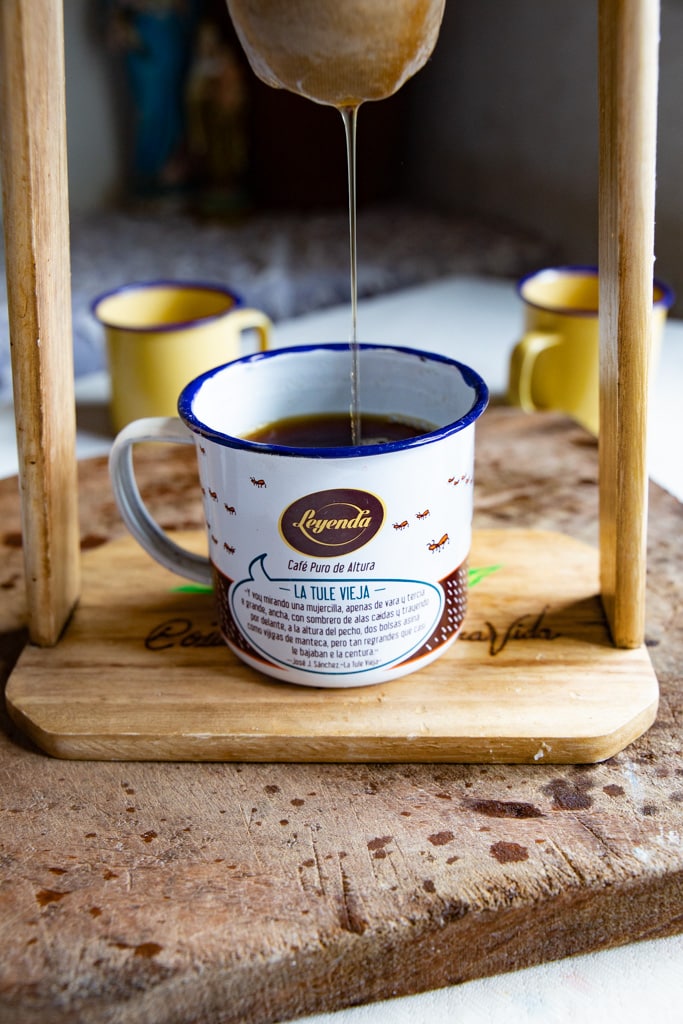
Costa Rican Coffee That Is Available Only in Costa Rica
Cafe Don Juan- this coffee is from Monteverde. The coffee tour there can be paired with a chocolate-making tour and boasts some of the best dark chocolate in all of Costa Rica!
Coopepalmares- This is our personal favorite. It’s the coffee picked in the area where we lived in Costa Rica with our kids in 2019 and then processed in Palmares, Costa Rica. It’s small-batch, processed daily, and only found in brown paper bags at the Coopepalmares grocery store in downtown Palmares.
If you are driving down the national highway between San Jose and Liberia at any point, stop and get a couple of kilos- they will grind it on site and you will NOT be sorry you bought it.
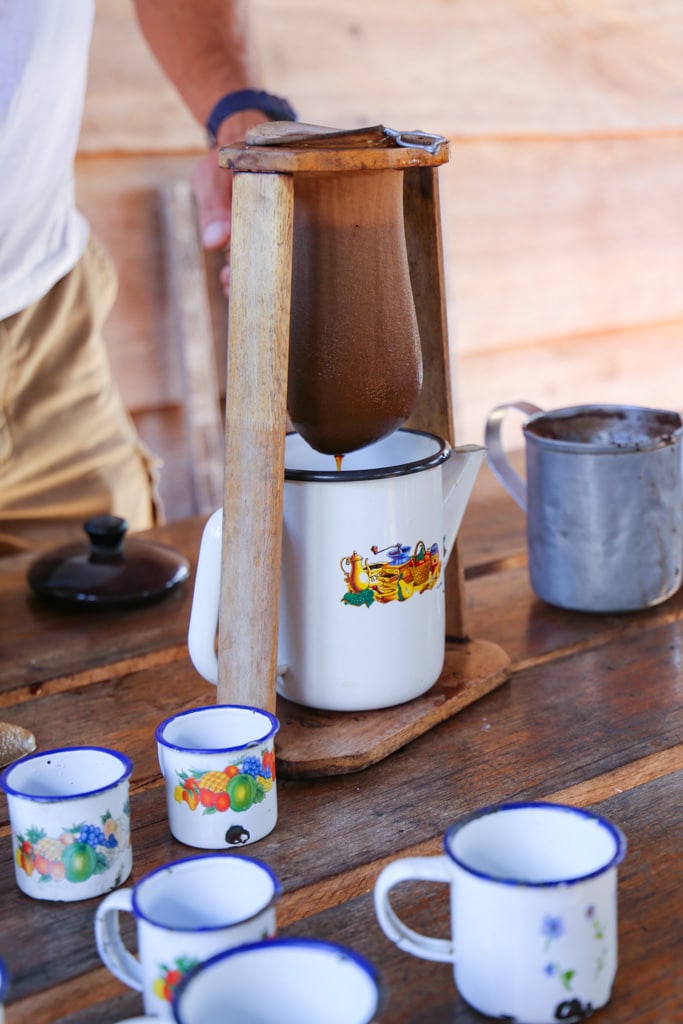
Traditional Costa Rican Coffee Recipe – Café Chorreado
Printable recipe below
Ingredients
- Ground coffee
- Hot water
- Costa Rican chorreador
- Costa Rican coffee sock
- Cream and sugar to taste
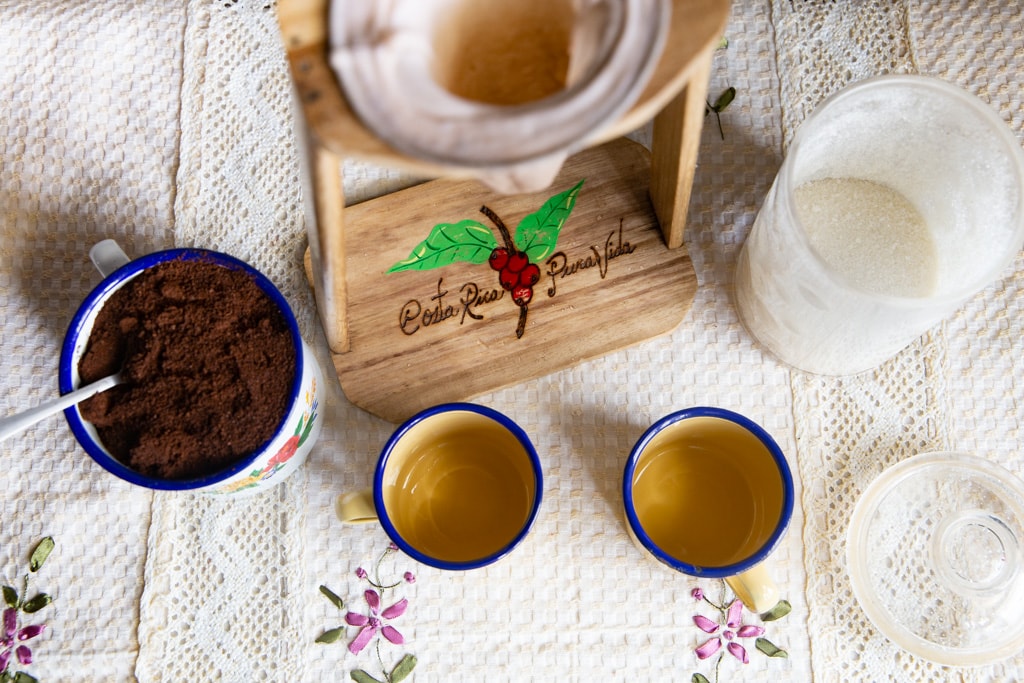
Instructions
In a kettle or stovetop, heat water to boiling. Place the coffee sock into the chorreador. Spoon in the ground coffee and place a coffee cup under the coffee sock.
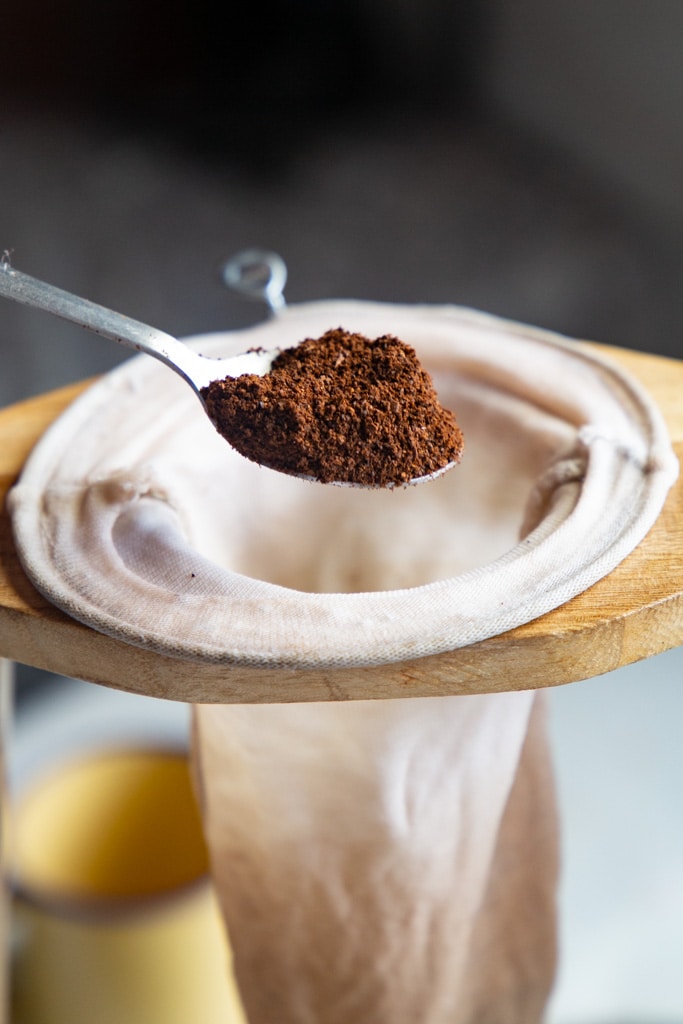
Slowly pour the hot water through the sock and allow the coffee to drip down for several minutes. Serve hot with sugar and cream to taste.
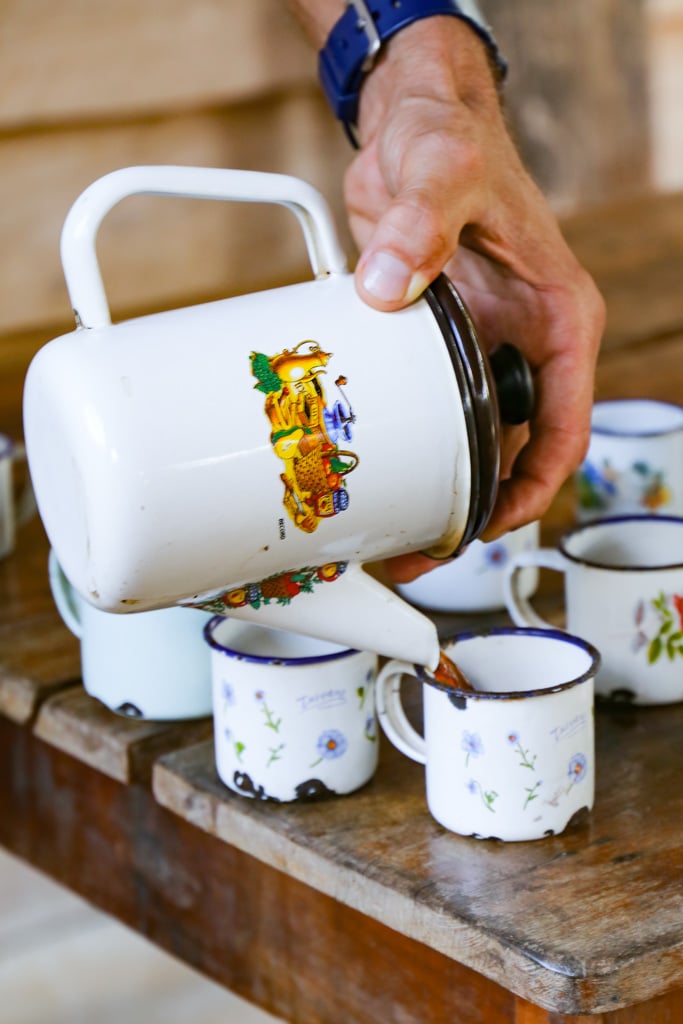
Substitutions
You can purchase whole-bean coffee and grind it yourself before making the cafe chorreado.
Variations
The main variation here is to use a French press or a drip coffee maker to make your coffee- but I almost feel like that’s a totally separate recipe.
Serving Suggestions
The only requirement to serving Costa Rican coffee is that you savor it slowly and lovingly. It’s important to consume Costa Rican coffee with good company.
Otherwise, serve at breakfast with gallo pinto, dessert tamales, pork tamales, empanadas, homemade tortillas, torta chilena, tes leches, patacones, sweet plantains… the list is endless.
Join me over at my favorite place- Instagram.
Traditional Costa Rican Coffee Recipe
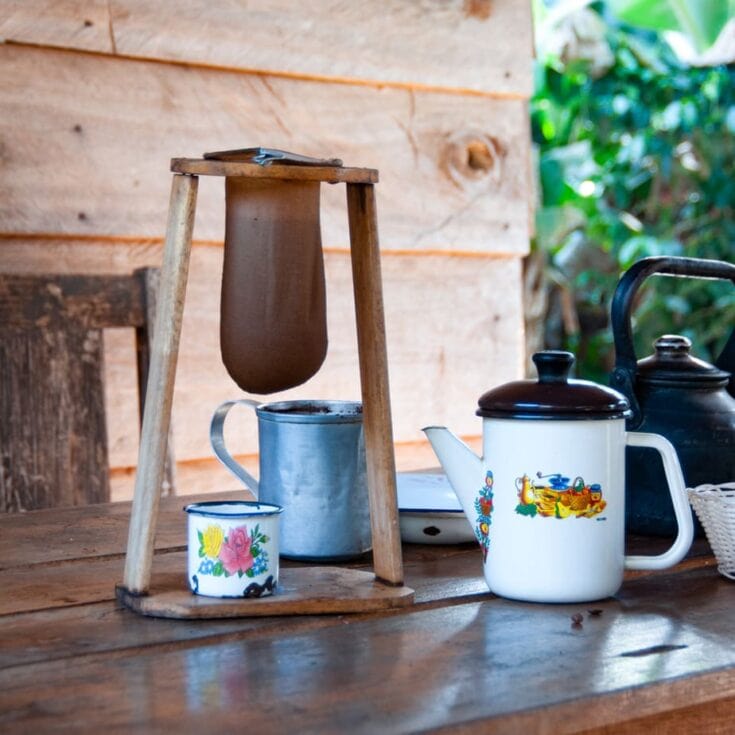
Ingredients
- 2 tablespoon ground coffee (more or less to taste, everyone has their own personal preference)
- 2 cups hot water
- Costa Rican chorreador
- Costa Rican coffee sock
- Cream and sugar to taste
Instructions
- In a kettle or stovetop, heat water to boiling.
- Place the coffee sock into the chorreador.
- Spoon in the ground coffee and place a coffee cup under the coffee sock.
- Slowly pour the hot water through the sock and allow the coffee to drip down for several minutes.
- Serve hot with sugar and cream to taste.
Pin it!
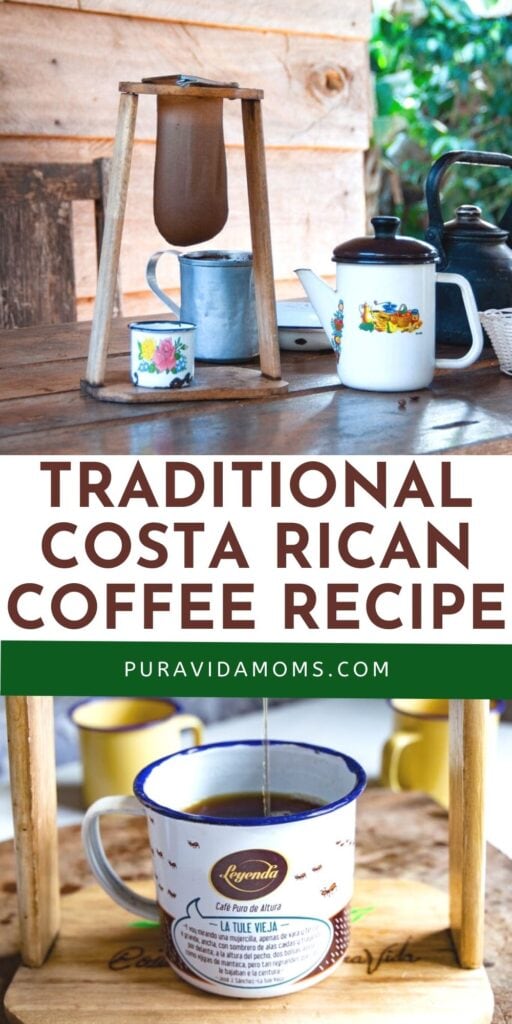

Christa Jimenez
Welcome! I’m Christa, a Spanish teacher married to a handsome Costa Rican and mother of two bilingual daughters. We’ve spent over 25 years living in and traveling to Costa Rica with our daughters, and this website is my love letter to all things Costa Rica- and to bilingual parenting too. You can read my full story here. Thanks for stopping by!

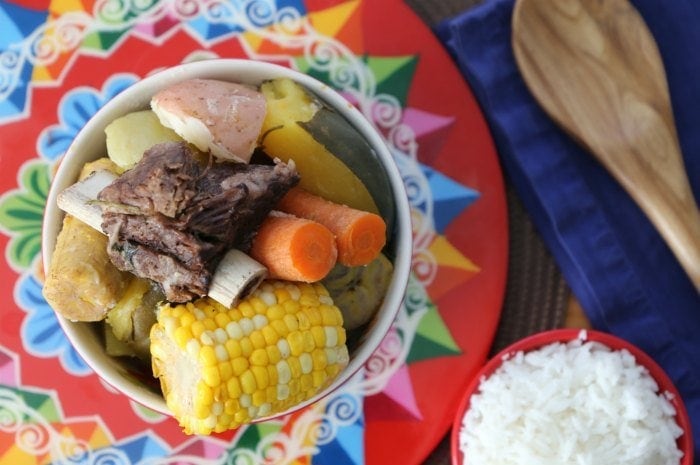
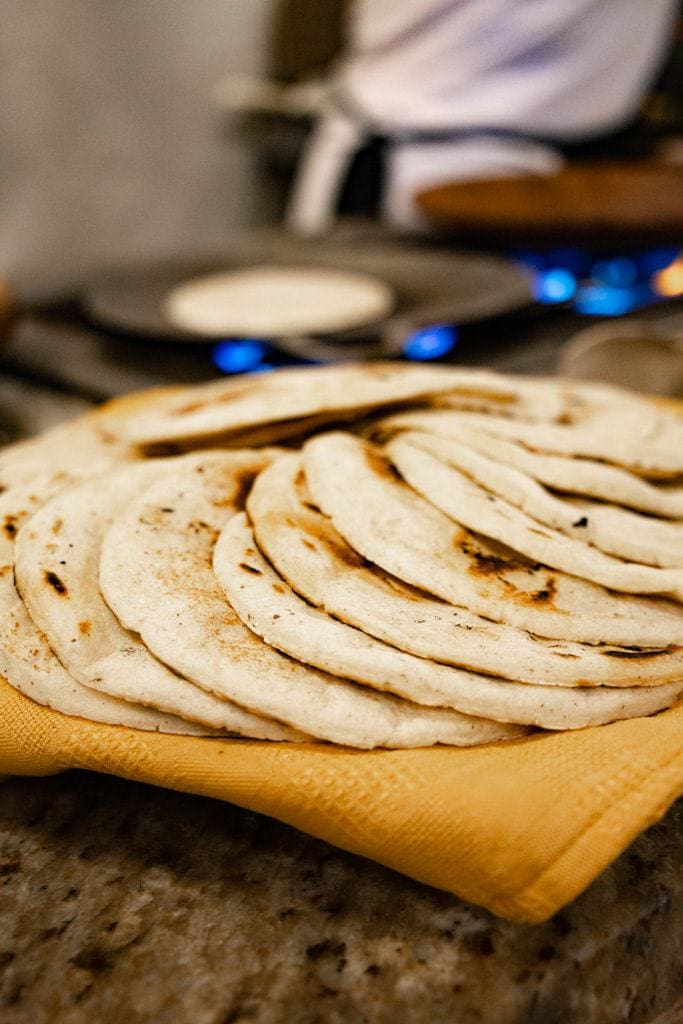
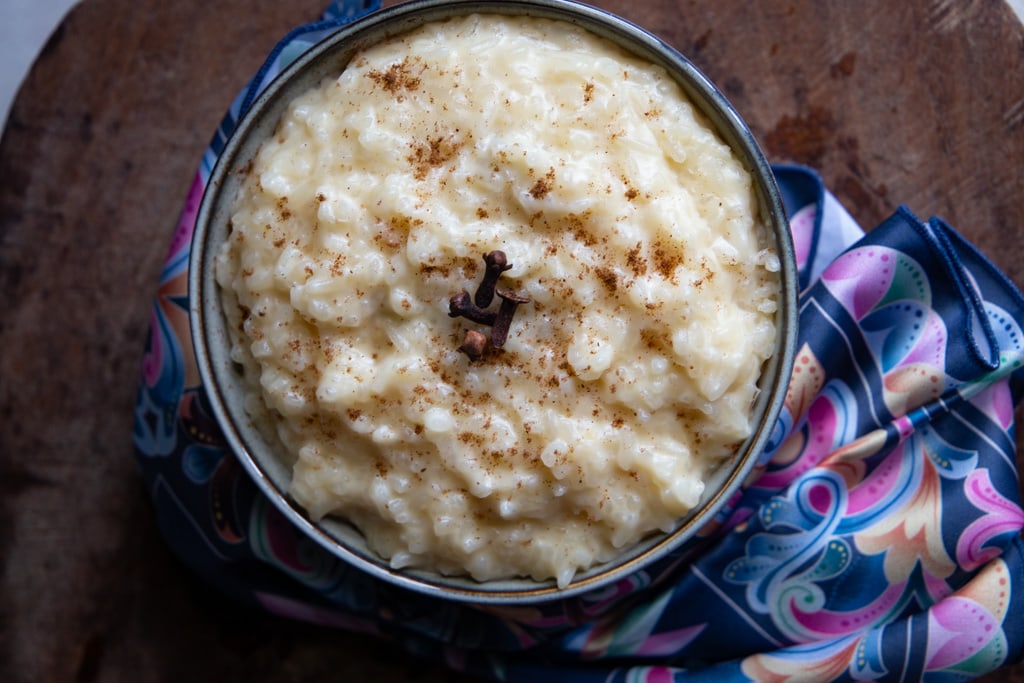
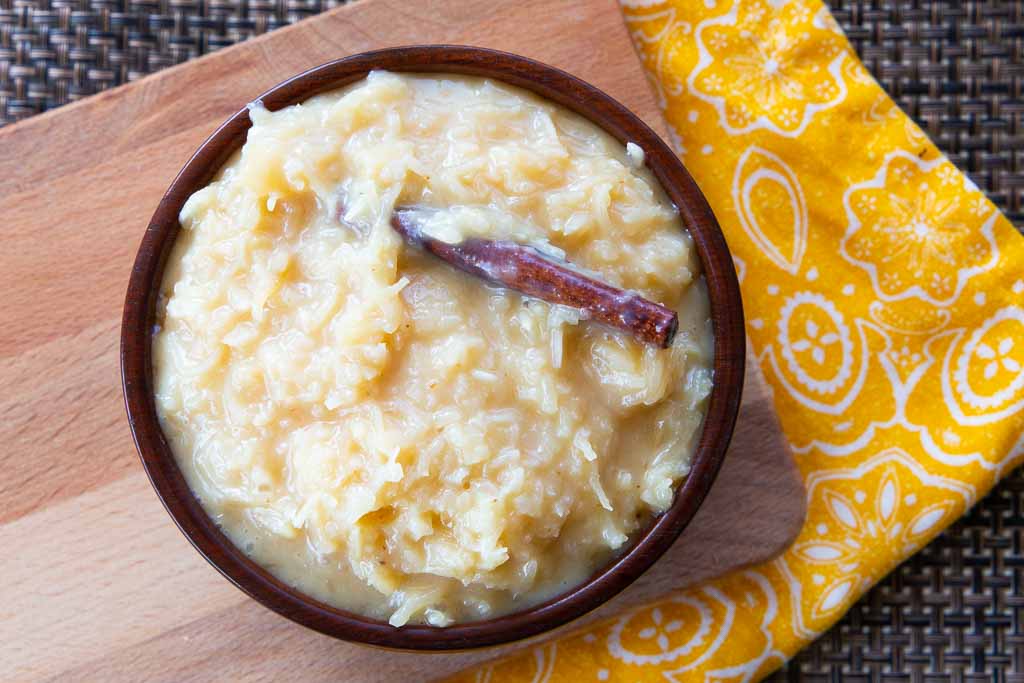
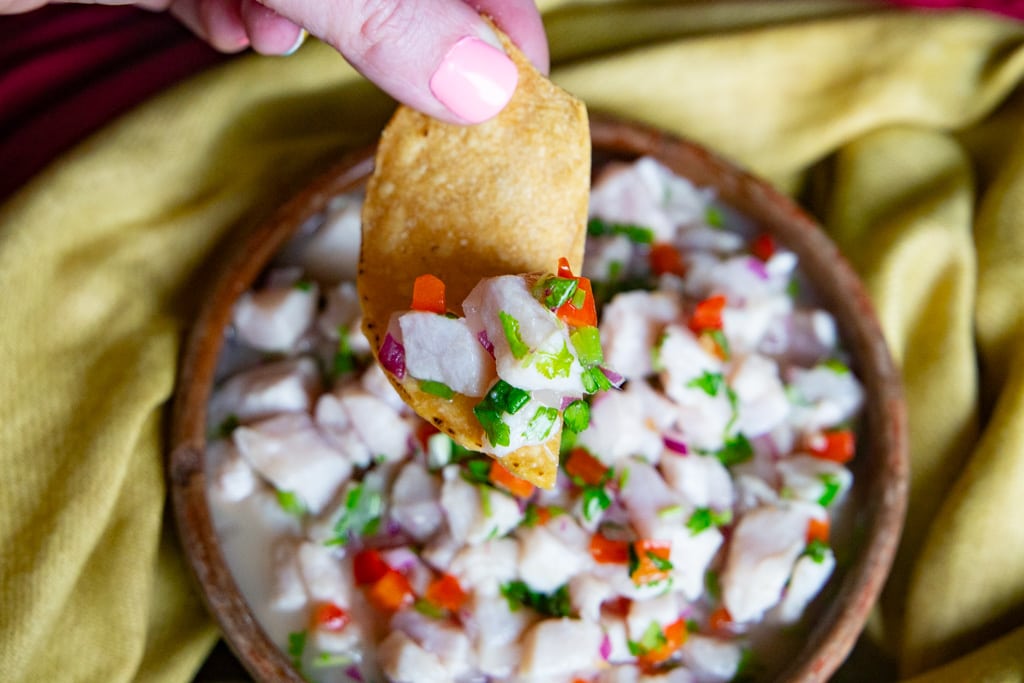
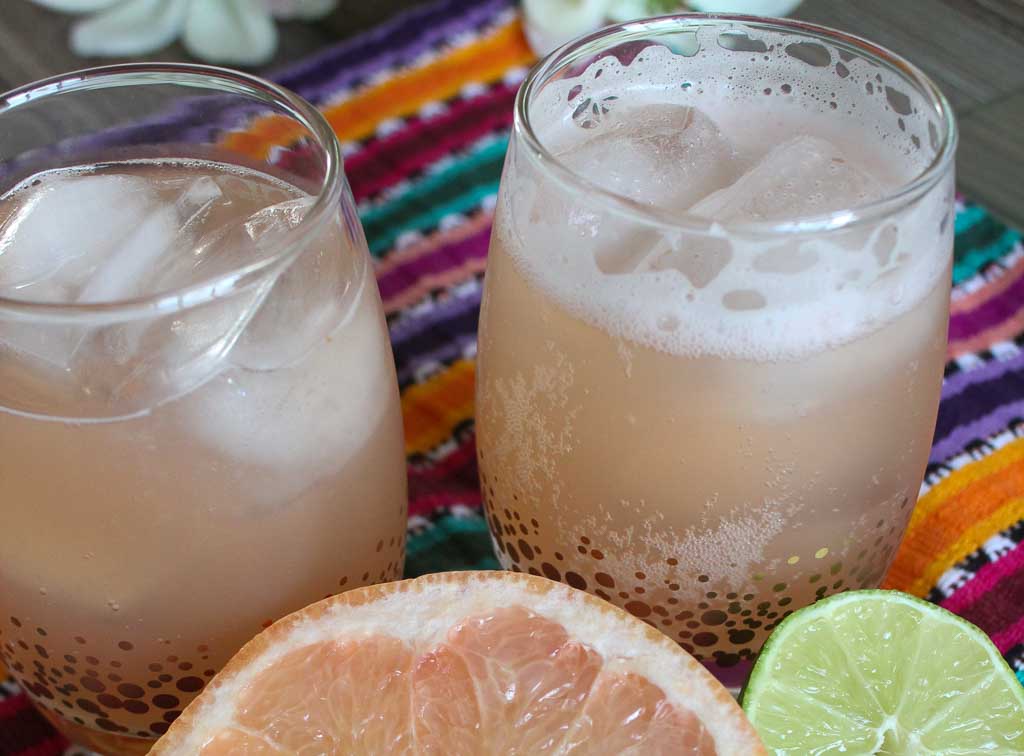

How do I prepare drink of the gods and also cocoa ginger tea I purchased in CR, thank you!
Hi Stacy! How fun you got those products! I’m not familiar with them but I would imagine you would steep the tea like any other tea. The drink of the gods is a new one for me- what does it have in it? ~Christa
do not pour boiling water over the grounds. let the water stop boiling. when you pour the water. pour enough to initially cover the grounds and allow the grounds to bloom, about 30 to 60 seconds, then continue pouring to finish your cup.
Sounds perfect! Pura Vida! ~Christa
I’m looking for traditional Costa Rica tin cups. Where did you get yours?
I got them in Costa Rica. But you can find them many times in camping stores because people use them for coffee when camping. I hope you find some! Pura Vida! ~Christa
Hi Christa,
When in Costa Rica, I have a hard time trying to determine which brand or type of cream to put in the coffee. Can you provide a few recommendations?
This is hard- Costa Ricans only use milk in their coffee, not creamer. I have seen lots of forums from ex-pats in Costa Rica who say they have creamer brought to Costa Rica from home because it’s nearly impossible to find! ~Christa